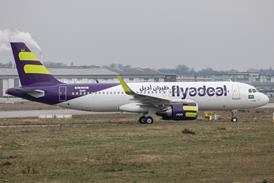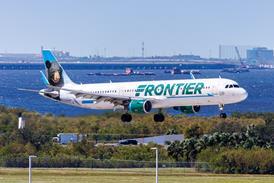PETER LA FRANCHI / SYDNEY
Royal Australian Air Force chief Air Marshal Angus Houston has identified a need for a larger air-to-air refuelling fleet and increased integration of Australia's broad-area surveillance systems as part of emerging thinking on force structures up to 2020.
Houston proposes replacing the RAAF's maritime surveillance aircraft with multimission aircraft, rather than further upgrading its Lockheed Martin AP-3C Orions. While he sees an end to RAAF manned surveillance, he says Australia will continue to operate manned combat aircraft until at least midway through the century.
The comments, made at January's Royal Australian Navy Sea Power 2002 conference, reflect ongoing re-thinking in the RAAF and Australian Defence Force (ADF) about future aerospace capabilities given the combined pressures of a changing global strategic environment and renewed funding shortfalls.
Last October, the government ordered a strategic review to assess the implications of the post-11 September world. In December, the Australian defence capability and investment committee determined that funding pressures facing all three Australian services, caused by a huge increase in operations, are so great that no new spending programmes will be launched until after full review of budget conditions. The review panel is due to report this month. Both reviews will be considered by the government in March as part of the 2002-3 defence budget, due for release on 7 May.
Houston's comments come only seven months after the release of Australia's 10-year aerospace capability plan, covering 2001-11, and indicate that subtle but important changes are creeping into the RAAF's long-term picture.
He said the RAAF's current acquisition activities will result in "incredible surveillance and control capabilities coming into service in the next few years. By 2020 we will have total coverage of our northern approaches with the Jindalee Over the Horizon Radar network".
However, while that picture would be augmented by airborne early warning and control (AEW&C) aircraft, other airborne surveillance sensors will still be required, with unmanned aircraft predominating. "I think that the days of the manned surveillance platform are limited. I would like to see us get into unmanned air vehicle technologies for all those surveillance tasks. Something like the [Northrop Grumman] Global Hawk with a maritime sensor package will give us very good back-up to the over-the-horizon radar." Current Australian defence plans call for a Global Hawk acquisition to commence in 2004.
The RAAF's AP-3Cs "will probably be replaced by a multimission maritime aircraft, and that capability needs to be much more survivable than the P-3 and may face real threat of submarines able to engage aircraft from below the surface. That is something I am sure is not that far away."
Houston suggests that a one-for-one Orion replacement is increasingly unlikely. Australia's 10-year capability plan proposes deciding on remanufacture or replacement of its Orions in the 2007 defence budget. Last year, Australian planners began to examine a combined programme, Air 7000, to consider the Global Hawk acquisition in conjunction with the Orions' future.
Houston adds that the Global Hawk is likely to predominate future RAAF thinking about space use. He says Australia will continue to face funding pressures, limiting space assets to communications satellites. "I think we should, at some stage, have a look at the viability of using space vis- -vis Global Hawk. I suspect that it is probably better. My gut feeling is that Global Hawk is probably the better way to go for the purposes that we have in this part of the world."
The ADF is, however, studying potential applications for pico- and nano-satellites in surveillance roles, with research contracts awarded late last year to Auspace, a Canberra-based Astrium subsidiary, to assess cost benefits.
Houston told the conference that planning for the introduction of AEW&C aircraft highlighted problems in the Australia's command and control integration. "AEW&C will also perform a very vital control function and I think it will be used a lot in that particular role. In the air force we also have our control reporting outfits and they all need to be integrated into the ADF command and control system.
"What we want is not an air force command and control system, but a fully integrated ADF system and all of the RAAF systems need to be dedicated to that purpose. That means we have got to get better in terms of connecting our systems.
"Some of our systems can't talk to each other and we have really got to get to grips with the problem of datalinking." Datalinks need a common standard so that remote sensors can communicate with operational commands and pass data to the frontline forces.
He continues: "What we need is a system that is totally linked up so that everybody is on the same network and I think we will be a lot more effective when we get to that stage. I believe the ADF in 2020 will have that capability but we need to put priority on it right now."
Houston says that, by 2020, the RAAF's developing Air 6000 future fighter programme will have supplied the service with a "highly capable multirole aircraft. You might ask: 'What about UCAVs?' Well I think UCAVs have still got a little way to go. We are seeing [General Atomics] Predators with [Lockheed Martin] Hellfire in Afghanistan, but I think we get more flexibility out of manned aircraft for the air combat role." He predicts a further generation of manned aircraft before UCAVs, which will be state-of-the-art by the middle of this century. "I don't think there will be another manned fighter after the F-22/F-35 series."
Air 6000 is likely to generate a requirement for additional air-to-air refuelling capabilities on top of current plans to replace the RAAF's four Boeing 707 tankers in the next two years. A tender for an interim fleet of five aircraft is underway with a contest for a permanent fleet to be launched late this year if the project gets funding in the May budget.
Houston says the current tanker plans will result in a "very good capability but by 2020 I would like to see us have even more capability. Because if you have a highly capable air combat aircraft, and you have the right number of tankers, it gives you several options in the way you can deploy that multirole aircraft."
Source: Flight International























